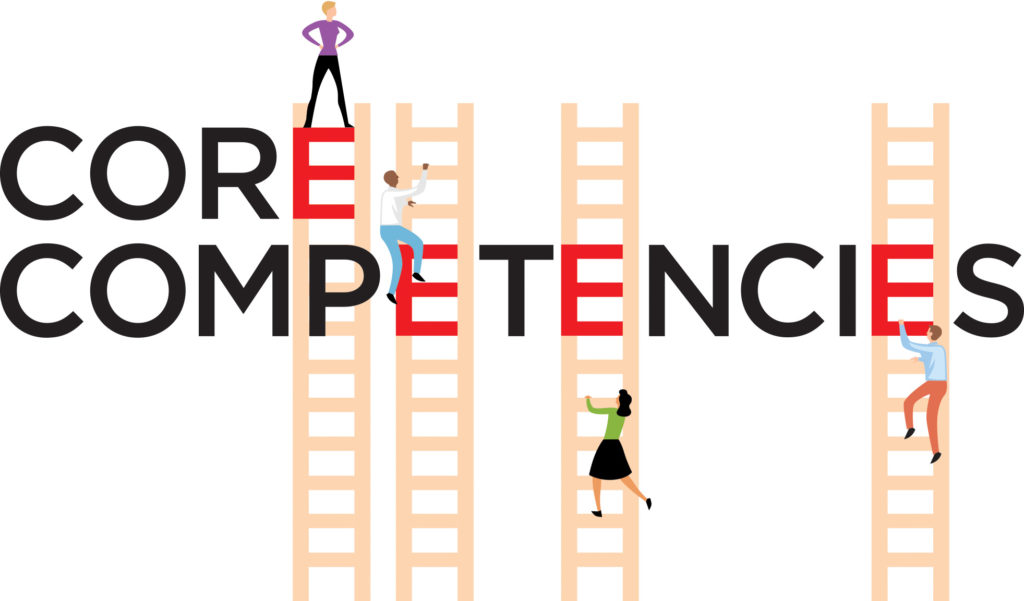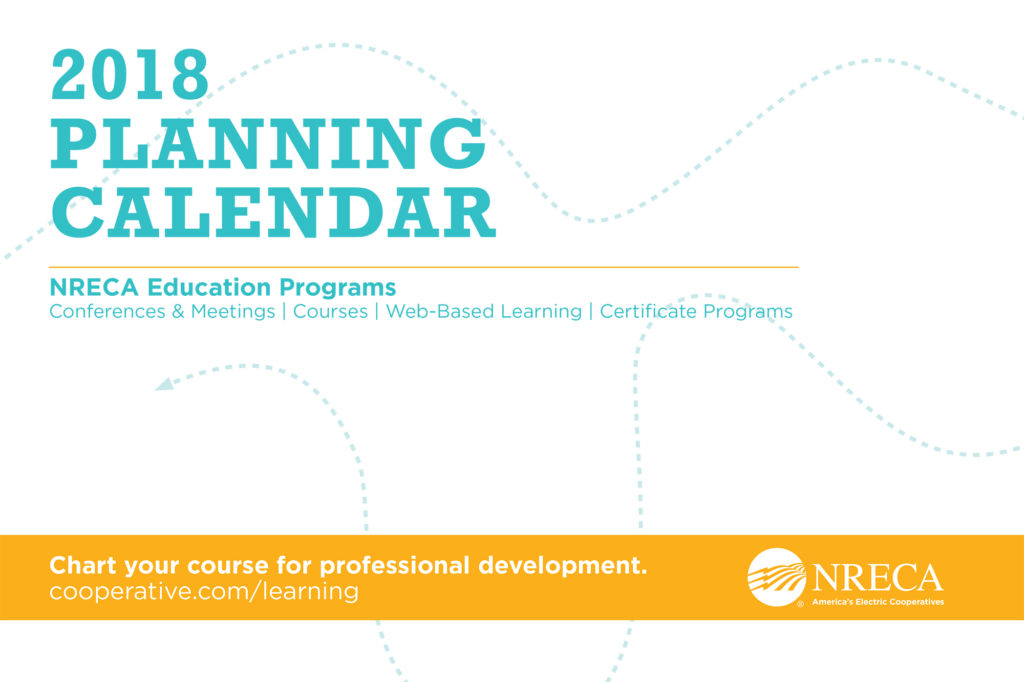
Seven years ago, Erica Villarreal was ordering office supplies at
Sunflower Electric Power Corporation as an administrative assistant. Today, she is the G&T’s power contracts manager and is frequently called on to explain complex wholesale power agreements to local officials and co-op directors.
“If you told me that I would be giving presentations before the city council, I would have said, ‘No, you’re crazy,’” Villarreal says.
Her ascent of the career ladder at the Hays, Kan.-based generation and transmission co-op was the result of more than just hard work and good timing. All along, supervisors noticed her potential and were able to guide her upward using a professional development model that’s gaining traction in many industries, including electric utilities.
The approach is known as “core competencies,” a detailed analysis of the industry- and job-specific knowledge, skills, and behaviors a worker would need to be successful in a given position.
To Sunflower Electric President and CEO Stuart Lowry, the model, which is nearing the end of a yearlong pilot at the co-op, is key to realizing the full potential of their staff.
“From my standpoint, we have a lot of talent in our organization, and we want to identify those people who want to move up in the company,” Lowry says. “If they have the ambition to improve, then we’ll provide the training opportunities.”
Lowry describes Villarreal as “Exhibit A”—proof the approach works.
Villarreal says she was ready for new challenges, and Sunflower’s competencies model provided a blueprint necessary for her advancement.
“Through feedback from others and recognizing competencies that were critical to my new role, I was able to identify specific competencies that needed improvement, and a customized development plan with specific action steps helped me improve,” she says.
Hire, Evaluate, Train
Villarreal is one of 10 employees whose direct supervisors are testing Sunflower’s core competencies model. After the G&T reviews results and makes any changes needed, it will use the plan for employee development.
“Employees will see how they rate on competencies and be able to identify areas for development. The competency model provides tools to help employees fill key role positions,” says Carol Haberman, Sunflower’s manager of organizational development.
There are hundreds, if not thousands, of competency models for individual professions, specific corporations, and students. The Department of Labor even runs an online competency-model clearinghouse.
“There are a lot of competency models at different levels that define what people need to be able to do to be successful in jobs or careers, ranging from students to the professional level,” says Joseph Jones, director of HR competencies & resource research at the Society for Human Resource Management.
Often described as “soft skills,” competencies are different at each organization, depending on its industry, mission, and culture, says LeAnn Brown, a management professor at Fort Hays State University in Kansas who helped Sunflower develop its model over two years.
“Competencies provide organizations with a way to define in behavioral terms what people need to do or demonstrate in order to be successful,” Brown says. “It’s like putting a language to the behavior they’re expecting.”
Jones says developing competency models that include clearly defined, job-relevant, and behaviorally based performance statements gives organizations an invaluable tool when hiring, evaluating, and training employees.
“Some jobs can have so many different skills and abilities and knowledge important for performing that job, it can be overwhelming,” Jones says. “So instead of looking at 200 different skills, you can focus on a fewer number of areas to see where your team is performing well.”
More electric co-ops are understanding the value of core competencies as they seek to replace seasoned workers who have decades of experience. Last year, co-ops filled 6,000 positions, and about 5,600 co-op employees are eligible to retire now, according to NRECA workforce data. Over the next five years, more than 9,600 additional workers will reach retirement age.
A rapidly evolving industry complicates the search for new talent, says Tracey Steiner, NRECA’s senior vice president for Education and Training.
“The reality is that the work we need staff to do is changing,” she says. “The work to be done will require different skills, and we may be challenged to find the people to do it unless we put time and effort into their development. Just hoping that because they are smart and dedicated people they can figure it out is not a great strategy.”
NRECA is using competencies to develop its co-op education programs and has developed a framework to help co-ops looking to develop their own core competencies.
“Co-ops can evaluate their staff against the competencies to identify performance gaps and then focus on improving in specific areas,” Steiner says. “And if a co-op finds certain skill sets are lacking in their current workforce, then those competencies become priorities when hiring new employees.”
Texas Exodus
Faced with a nearly 20 percent retirement in its senior leadership within the next seven years,
South Texas Electric Cooperative (STEC) began working on a model last year to address the pending exodus.
“When I came to STEC in the fall of 2014, it became clear we had a significant portion of the workforce that was approaching retirement age,” says Mike Kezar, general manager of the Nursery, Texas-based G&T. “Many of those employees are in jobs that we considered to be critical positions but with no one trained to replace them.”
Double-digit growth in generation requirements and the addition of two member distribution co-ops made the situation urgent.
To prepare for the loss of knowledge and experience, the co-op came up with a succession plan that identified critical positions and incorporated competencies for recruiting, promoting, and evaluating potential employees.
“Core competencies were developed for all employees, and additional competencies were identified for supervisors and executive/leadership positions,” Kezar says.
After extensive meetings with directors, labor attorneys, and a human resources consultant, competencies were boiled down to five for all 260 employees: integrity and trust; customer focus; problem solving; time management; and effective communication. Two more were added for supervisors: build effective teams and direct others. Executive leaders must fulfill three additional competencies: business acumen, strategic agility, and command skills.
Technical ability is still important, Kezar says, but if “you want to move up in the organization, these are areas you need to be paying attention to. If your job focus has been, ‘I show up at work, I do my job, and I stay out of trouble,’… now we’re saying how you interact with team members and manage your time is important. You will be evaluated on that.”
'A Vital Tool'
When asked whether the core competencies model has helped advance the career of an employee at
Palmetto Electric Cooperative in Hardeeville, S.C., Georgia Vido didn’t have to look far.
Vido began her career in the co-op’s customer service department and became a human resources specialist before being promoted to her current position, vice president of HR.
“When I moved to human resources, I didn’t have a background in HR,” says Vido, who earned her bachelor’s degree while working full time.
She credits her supervisor’s feedback and encouragement and the co-op’s competencies for motivating her to improve.
“My supervisor, Jane Frederick, and I worked together to create a development plan based on several different competencies, one of those being job knowledge. Being given the necessary tools and resources early in my career helped me to develop the knowledge and skills that I needed to become an effective leader.”
The feedback element is especially valuable, Vido says, and it resonates now that she’s in management.
“Competencies are a vital tool for employers to evaluate their employees’ overall job performance, knowledge, and skill levels,” she says. “But what’s just as important is the amount of feedback that an employee receives from his or her supervisor that helps them to become an effective leader.”
Several years ago, Gary Miller, president/CEO of
GreyStone Power Corporation in Douglasville, Ga., announced the co-op’s new hiring policy would be to promote from within whenever possible. Angie Pagan, a member services representative at the time, took action.
“I remember thinking, ‘This [is] presenting me with a huge opportunity,” says Pagan, who began as a cashier 12 years ago and was promoted several times in the member services department. “I went back to school in 2010 to get an associate’s degree, but when I learned I [could] go further, I took that step.”
Pagan took classes at
GreyStone University, the co-op’s training school developed around core competencies, to improve her communication skills, an area flagged in her customized development plan. And in December, she got her bachelor’s degree in business administration from Mercer University.
The co-op promoted Pagan to member services supervisor in 2014, and she now has 11 direct reports.
“I believe that if you do your part, the company will do their part. It’s a win-win wherever there is room for growth.”
An Eye Toward the Future
Core competencies are particularly valuable during the hiring process, helping managers cut through less relevant details and zero in on how a candidate’s specific proficiencies match up to the requirements of the job.
“The ultimate aim is to hire someone who can contribute value over time, someone who has the knowledge, skills, and abilities needed today, who is willing to continue learning as the membership and industry evolve,” says Gary Pfann, NRECA’s director of executive and staff education.
Once on the job, Pfann adds, employees and supervisors, through informal check-ins and annual performance evaluations, can leverage competencies to track progress, target areas of improvement, and come up with personal development plans.
South Central Indiana REMC evaluates about 80 employees for progress on core competencies that are refined for groups of positions in an electronic format.
“We’re trying to get away from the old-style check-the-boxes approach and focus on the conversations where you can be honest and open and not tied up with the paperwork,” says Marilou Idland, vice president of human resources at the Martinsville-based co-op. “So even if people aren’t ready for the next move, or they want to stay in the same job but take on new ventures, the process can spark a lot of conversations and ideas for development opportunities.”
The emphasis of core competencies on continuing professional development is an important facet, especially among millennials—those born between 1981 and 2004. EdAssist, an educational management company, found that when asked to choose between similar jobs, 60 percent of millennials would pick the job with strong potential for professional development over one with regular pay raises.
“If they don’t feel like they’re growing and developing, they will leave,” says Rita Harris, human resources manager at GreyStone Power, where a core competencies model has been in place for about five years. “We have to find a way to keep them engaged, even if we don’t have a rung on the ladder for them at that time.”
Still not convinced? Consider the high cost of turnover. The total costs for replacing an employee, including training and lost production, can range from 90 to 200 percent of a new hire’s salary, according to the Society of Human Resource Management.
Core competencies can mitigate turnover by helping co-ops take stock of in-house talent “so people are positioned and ready” as jobs open, Harris says.
“People stay at co-ops forever. Development opportunities and job openings don’t happen every day. So having people ready for those opportunities when they are available is really important.”
Visit
Cooperative.com/competencies to see the Electric Cooperative Employee Competencies Model, a custom-made tool designed to help you identify and develop employees with the knowledge, skills, and abilities needed to succeed at your co-op.
 Download an Education Programs planning calendar for cooperative staff employees:
Download an Education Programs planning calendar for cooperative staff employees:

 Download a specific co-op director's Education Programs planning calendar.
Download a specific co-op director's Education Programs planning calendar.
